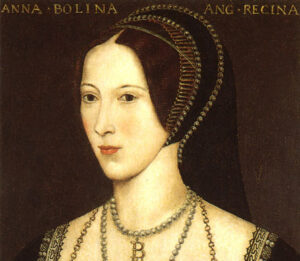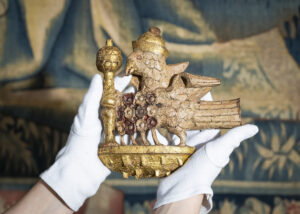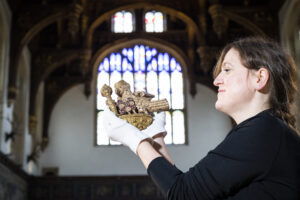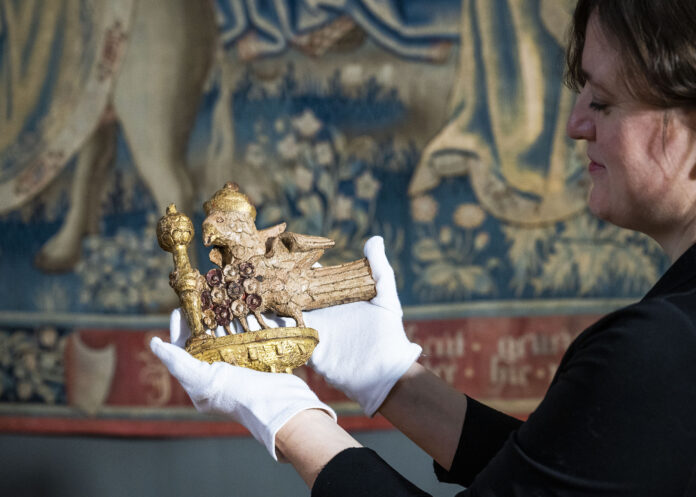To mark 500 years to the day that Anne Boleyn and King Henry VIII first met, her carved heraldic badge will go on display at Hampton Court Palace
4 March 2022 marks exactly 500 years since Anne Boleyn first appeared in front of her future husband, King Henry VIII, as she played the role of Perseverance in a court masque for the king’s entertainment. The story that followed is one that has captured audiences ever since; a story of love, passion, politics and, famously, execution.

Now, 500 years later, her carved heraldic badge will go on display in the Great Hall at Hampton Court Palace for visitors to see. The badge was discovered by antiques expert Paul Fitzsimmons who recognised it as the symbol of Anne Boleyn. The blackened oak carving depicts a crowned falcon atop a tree stump flowering with Tudor roses. During conservation a layer of black paint and centuries of soot and dirt were removed to reveal the original colouring of white, gold and red.
The symbols on the badge, complete with its Tudor and York roses growing from a dead tree stump, has been read as symbolising the fertility of the new queen at the time of her marriage, and Anne’s aspiration to wear the imperial crown which Henry offered at the time of his break with the Catholic Church.
The badge shows incredible likeness to the 43 surviving falcon badges decorating the frieze above the windows and the hammer beams in the Great Hall at Hampton Court. This led the curators at Historic Royal Palaces to believe that the carving is an element of the room’s original Tudor scheme.

The Great Hall inside the palace was designed to impress visitors and to proclaim Henry’s power and magnificence as king. Work began on the huge timber roof (the last great medieval hammerbeam roof in England) in 1532 and motifs relating to Anne Boleyn were added to celebrate her marriage to the king in 1533. This included her coat of arms, the intertwined letters H and A and her heraldic badge.
Although it is commonly believed that after Anne’s execution Henry made great efforts to completely erase her from his homes and palaces, research has revealed that, at Hampton Court Palace, following Henry’s marriage to his new queen, Jane Seymour, two craftsmen were employed to repaint and adapt the existing decorative scheme, and this is why the recently discovered heraldic badge had been painted black.
Although the curators at the palace have not yet been able to confirm whether or not this falcon is the same as those in situ on the roof of the Great Hall, and may not be able to for some time, the discovery has led to many exciting ‘what if’s?’ for historians. Additionally, the research undertaken so far certainly lends itself to the theory, particularly because there is one falcon less than expected in the surviving decorative scheme.

Sebastian Edwards, Deputy Chief Curator at Historic Royal Palaces, said: “…this is an incredibly rare example of Tudor royal ornamentation, imbued with the legend of Henry’s most famous Queen, which I hope will provide visitors to Hampton Court with a small taste of the jaw-dropping magnificence of the palace during the Tudor period.’
Anne Boleyn’s falcon will be on display in the Great Hall at Hampton Court Palace from 4 March 2022 and is included in palace admission.
Read more about Anne Boleyn and her Coronation here.






 © 2024
© 2024